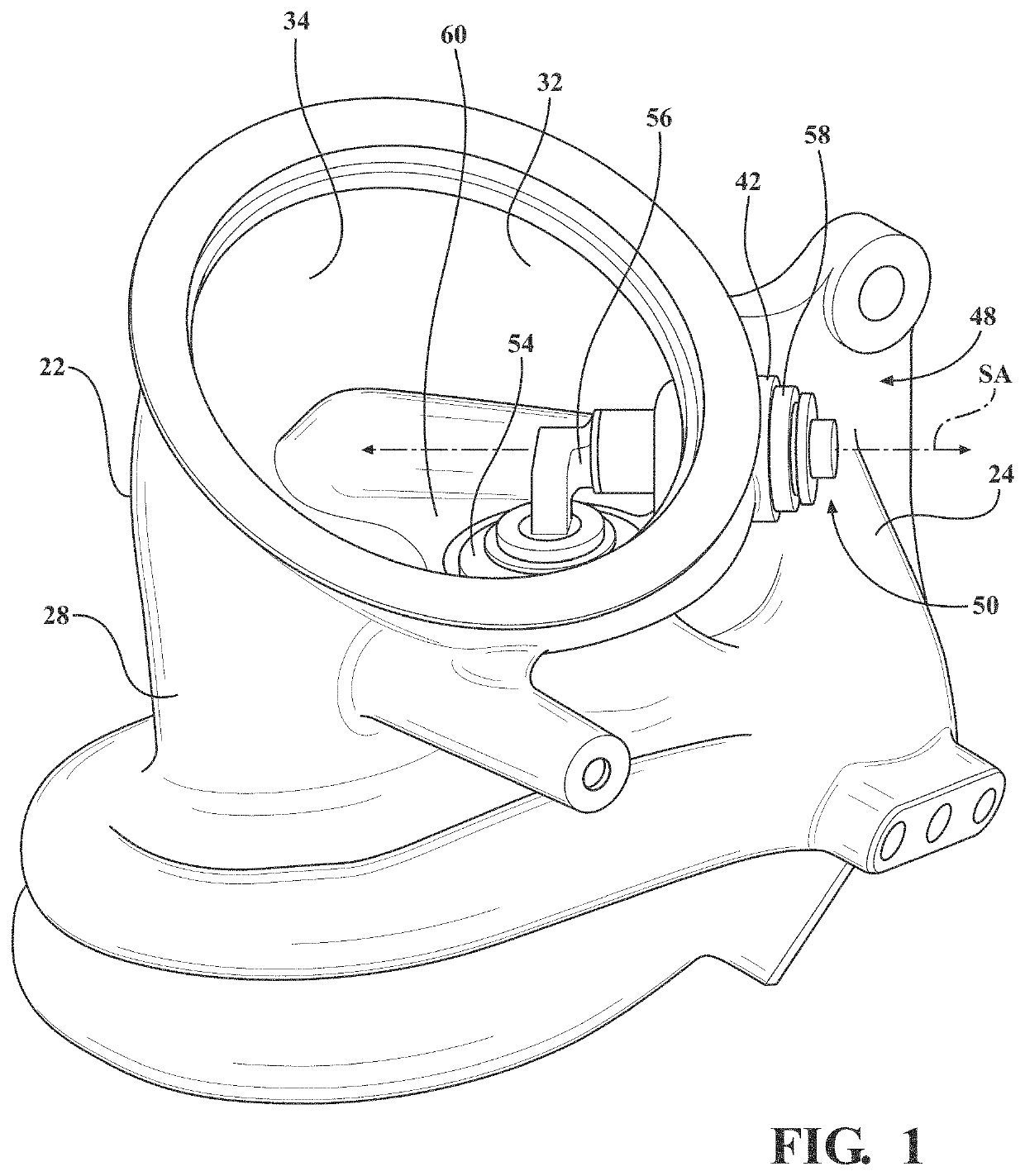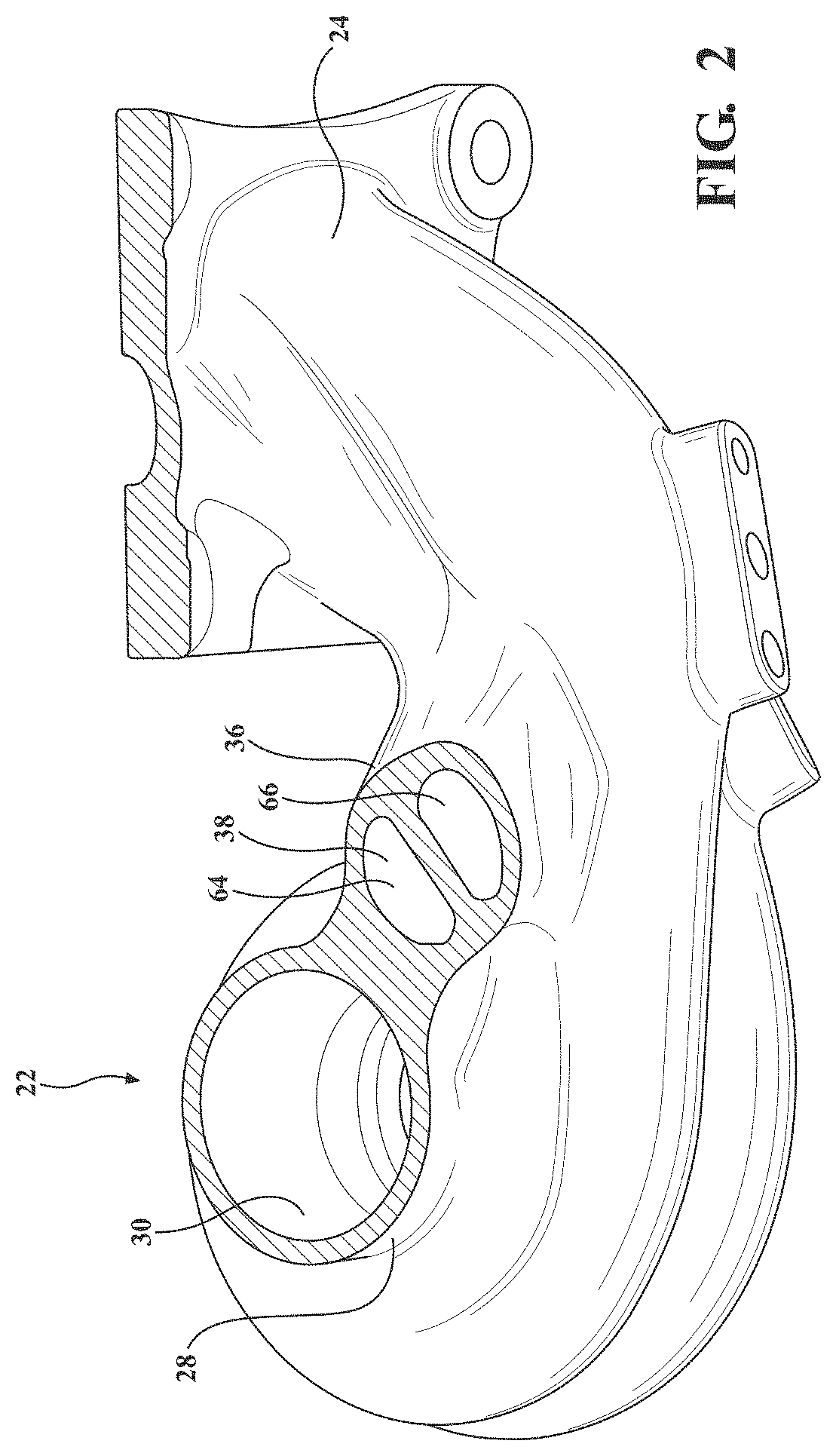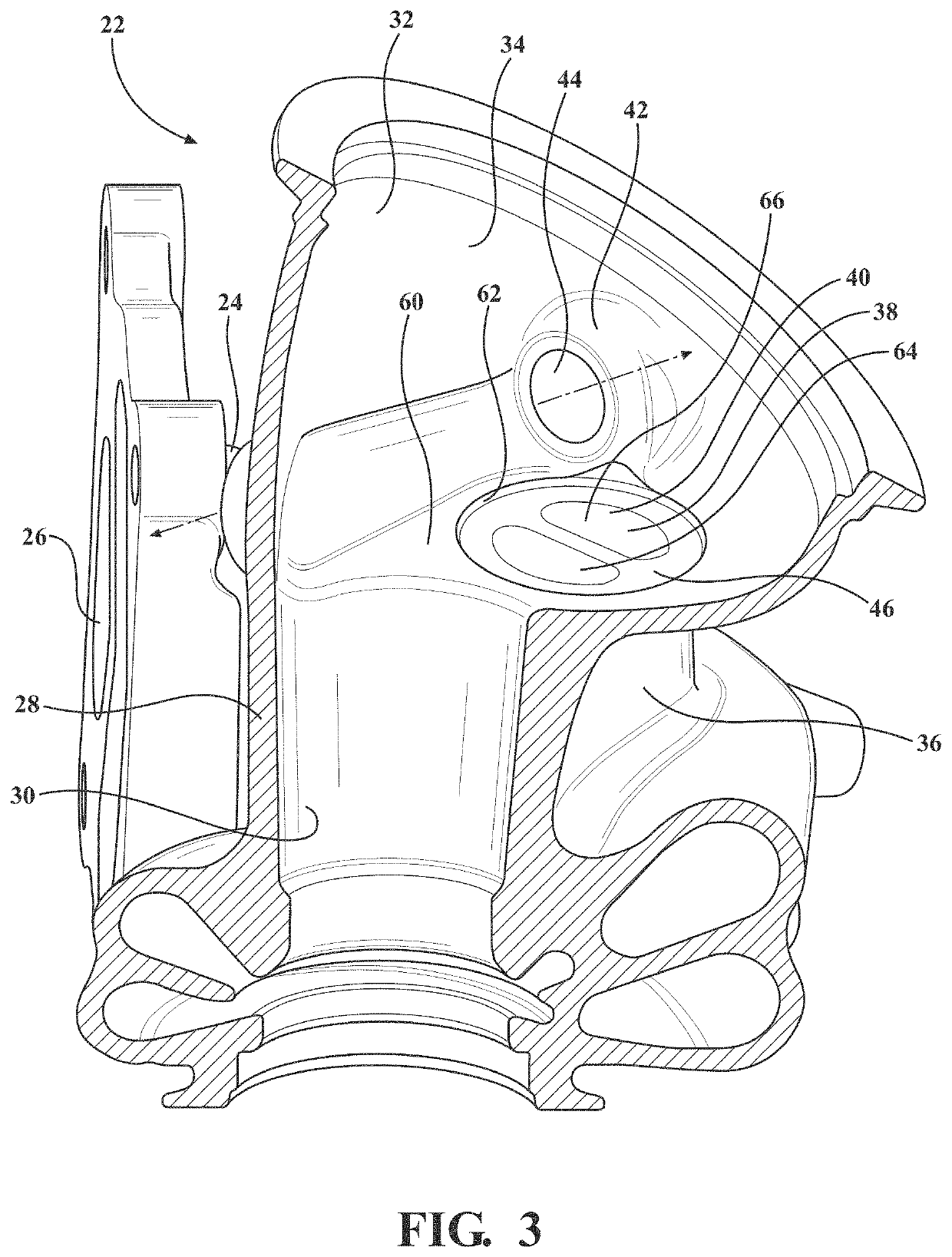Turbine housing of a turbocharger
a technology of turbocharger and turbine housing, which is applied in the direction of gas turbine plants, combustion engines, machines/engines, etc., can solve the problems of reducing and the failure of the turbocharger as a whole, so as to reduce the relative displacement between the valve seat and the bushing axis, improve the performance of the wastegate assembly, and reduce the thermal deformation of the wastegate port wall
- Summary
- Abstract
- Description
- Claims
- Application Information
AI Technical Summary
Benefits of technology
Problems solved by technology
Method used
Image
Examples
Embodiment Construction
[0017]With reference to the Figures, wherein like numerals indicate like parts throughout the several views, a turbocharger 20, which is schematically shown in FIG. 6, for receiving exhaust gas from an internal combustion engine of a vehicle and for delivering compressed air to the internal combustion engine includes a turbine housing 22, which is shown in FIGS. 1-5. With particular reference to FIG. 3, turbine housing 22 includes a turbine inlet wall 24 defining an inlet passage 26 configured to be in fluid communication with the internal combustion engine for receiving exhaust gas from the internal combustion engine. The inlet passage 26 may be a single volute inlet passage, or may be a multiple volute passage, such as a twin-scroll configuration, as shown in FIG. 5. With reference to FIGS. 1-4, the turbine housing 22 also includes an exducer shroud wall 28 defining an exducer interior 30 disposed downstream of and in fluid communication with the inlet passage 26 for receiving exh...
PUM
 Login to View More
Login to View More Abstract
Description
Claims
Application Information
 Login to View More
Login to View More - R&D
- Intellectual Property
- Life Sciences
- Materials
- Tech Scout
- Unparalleled Data Quality
- Higher Quality Content
- 60% Fewer Hallucinations
Browse by: Latest US Patents, China's latest patents, Technical Efficacy Thesaurus, Application Domain, Technology Topic, Popular Technical Reports.
© 2025 PatSnap. All rights reserved.Legal|Privacy policy|Modern Slavery Act Transparency Statement|Sitemap|About US| Contact US: help@patsnap.com



